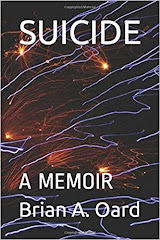My standard (and fairly harsh) assessment of John Updike is as follows: I used to think Updike was a great novelist--and then I turned fifteen. When I first read Rabbit, Run as a teenager, I thought it was a very good novel (but I much preferred Rabbit is Rich, which I considered great); re-reading it in my twenties, I found it a well-written but fairly standard work of post-Joycean literary fiction, not a book that should blow anyone's mind. Having just completed a third reading, I'm reminded of Harold Bloom's remark (in his very good Paris Review interview) that Updike is "a minor writer with a major style." Rabbit, Run is an extremely well-written book (Just about every page contains a sentence or two that most writers would sell their souls to have written--this much of the book is indeed mind-blowing), and it's better conceived and constructed than most of Updike's later novels, but it also has an unmistakably 'minor' feel. No reader would confuse it with an undeniably 'major' work like Absalom, Absalom! or Moby Dick or Sabbath's Theater. Updike has none of the rambunctious recklessness of the truly 'great' Great American Novelists. It's a small, claustrophobic story. And while this claustrophobia, this sense of entrapment, works to the novel's advantage--it is, after all, the story of the title character's entrapment in an unbearably claustrophobic life--it may also work against the novel by making the book seem as small and enclosed as the lives it represents.
It also occurs to me on this reading that Rabbit Angstrom can be seen as a tragic hero whose fatal reversal comes early, when he turns his car around and heads back to Brewer in the first section of the first Rabbit novel. The rest of Rabbit, Run and all of the subsequent three novels depict, over three decades of American life, the fatal consequences of that turning. Something crucial in Rabbit's soul is killed early in the first book when he defeatedly turns home, and the later three novels depict an increasingly posthumous life.
Saturday, February 13, 2010
Subscribe to:
Post Comments (Atom)










No comments:
Post a Comment